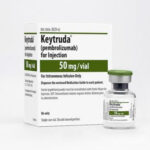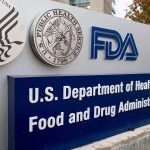UNODC World Drug Report 2023 Warns Of Converging Crises

Vienna, 26 June 2023: Continued record illicit drug supply and increasingly agile trafficking networks are compounding intersecting global crises and challenging health services and law enforcement responses, according to the World Drug Report 2023 launched by the UN Office on Drugs and Crime (UNODC) today.
New data put the global estimate of people who inject drugs in 2021 at 13.2 million, 18 percent higher than previously estimated. Globally, over 296 million people used drugs in 2021, an increase of 23 percent over the previous decade. The number of people who suffer from drug use disorders, meanwhile, has skyrocketed to 39.5 million, a 45 percent increase over 10 years.
The Report features a special chapter on drug trafficking and crimes that affect the environment in the Amazon Basin, as well as sections on clinical trials involving psychedelics and medical use of cannabis; drug use in humanitarian settings; innovations in drug treatment and other services; and drugs and conflict.
The World Drug Report 2023 also highlights how social and economic inequalities drive – and are driven by – drug challenges; the environmental devastation and human rights abuses caused by illicit drug economies; and the rising dominance of synthetic drugs.
The demand for treating drug-related disorders remains largely unmet, according to the report. Only one in five people suffering from drug-related disorders were in treatment for drug use in 2021, with widening disparities in access to treatment across regions.
Youth populations are the most vulnerable to using drugs and are also more severely affected by substance use disorder in several regions. In Africa, 70 percent of people in treatment are under the age of 35.
Public health, prevention, and access to treatment services must be prioritized worldwide, the report argues, or drug challenges will leave more people behind. The report further underscores the need for law enforcement responses to keep pace with agile criminal business models and the proliferation of cheap synthetic drugs that are easy to bring to market.
Reacting to the findings of the report, UNODC Executive Director Ghada Waly said “We are witnessing a continued rise in the number of people suffering from drug use disorders worldwide, while treatment is failing to reach all of those who need it. Meanwhile, we need to step up responses against drug trafficking rings that are exploiting conflicts and global crises to expand illicit drug cultivation and production, especially of synthetic drugs, fueling illicit markets and causing greater harm to people and communities.”
Drug-related disparities and inequalities
The right to health is not granted to many people who use drugs. Large inequalities in access and availability of controlled drugs for medical use persist, particularly for pain management. The disparity is particularly prevalent between the global North and South and across urban and rural areas, making some people feel the negative impact of drugs more than others. Some 86 percent of the world’s population live in countries with too little access to pharmaceutical opioids (as controlled under the 1961 Single Convention) – mainly low and middle-income countries.
Some impoverished and vulnerable populations, such as those in the tri-border area between Brazil, Colombia, and Peru, are trapped in rural areas with a high prevalence of drug-related crimes. Their remote locations make it exceedingly difficult for them to benefit from treatment services, resources, or the rule of law.
Illicit drug economies accelerating conflicts, human rights abuses, and environmental devastation
The drug economy in the Amazon Basin is exacerbating additional criminal activities – such as illegal logging, illegal mining, illegal land occupation, wildlife trafficking, and more – damaging the environment of the world’s largest rainforest. Indigenous peoples and other minorities are suffering the consequences of this crime convergence, including displacement, mercury poisoning, and exposure to violence, among others. Environmental defenders are sometimes specifically targeted by traffickers and armed groups.
While the war in Ukraine has displaced traditional cocaine and heroin routes, there are signs that the conflict could trigger an expansion of the manufacture and trafficking of synthetic drugs, given the existing know-how and the large markets for synthetic drugs developing in the region.
In the Sahel, the illicit drug trade finances non-state armed and insurgency groups, while in Haiti, drug traffickers take advantage of porous borders to bolster their businesses, fuelling the country’s multiplying crises.
Prioritizing public health in regulating medical use of controlled drugs
While new research on the use of controlled drugs such as psychedelics to treat mental health conditions and substance use disorders shows promise, the report cautions that the fast pace of developments could jeopardize efforts to enact policies that place public health concerns over commercial interests. Without well-designed, adequately researched frameworks in place, there may be too little access for those who need treatment – potentially causing patients to turn to illegal markets – or conversely, the psychedelics may be diverted for non-medical use.
Increasing dominance of synthetic drugs
The cheap, easy, and fast production of synthetic drugs has radically transformed many illicit drug markets. Criminals producing methamphetamine – the world’s dominant illegally manufactured synthetic drug – are attempting to evade law enforcement and regulatory responses through new synthesis routes, bases of operation, and non-controlled precursors.
Fentanyl has drastically altered the opioid market in North America with dire consequences. In 2021, the majority of the approximately 90,000 opioid-related overdose deaths in North America involved illegally manufactured fentanyl.
Drug ban in Afghanistan may have reversed the upward opium production trend
The 2023 opium harvest in Afghanistan may see a drastic drop following the national drug ban, as early reports suggest reductions in poppy cultivation. The benefits of a possible significant reduction in illicit opium cultivation in Afghanistan in 2023 would be global, but it will be at the expense of many farmers in the country who do not have alternative means of income generation. Afghanistan is also a major producer of methamphetamines in the region, and the drop in opiate cultivation could drive a shift towards synthetic drug manufacture, where different actors will benefit.
About the 2023 World Drug Report
This year, the World Drug Report has been published in a more streamlined, accessible format, with the Executive Summary and a series of analytical chapters made available in a downloadable pdf file. More than 90 data-driven storylines can be accessed through a dedicated web portal, which is easily searchable by region, type of drug, and topic, and which offers hundreds of graphs and maps that can be viewed and extracted. The report can be found here.





